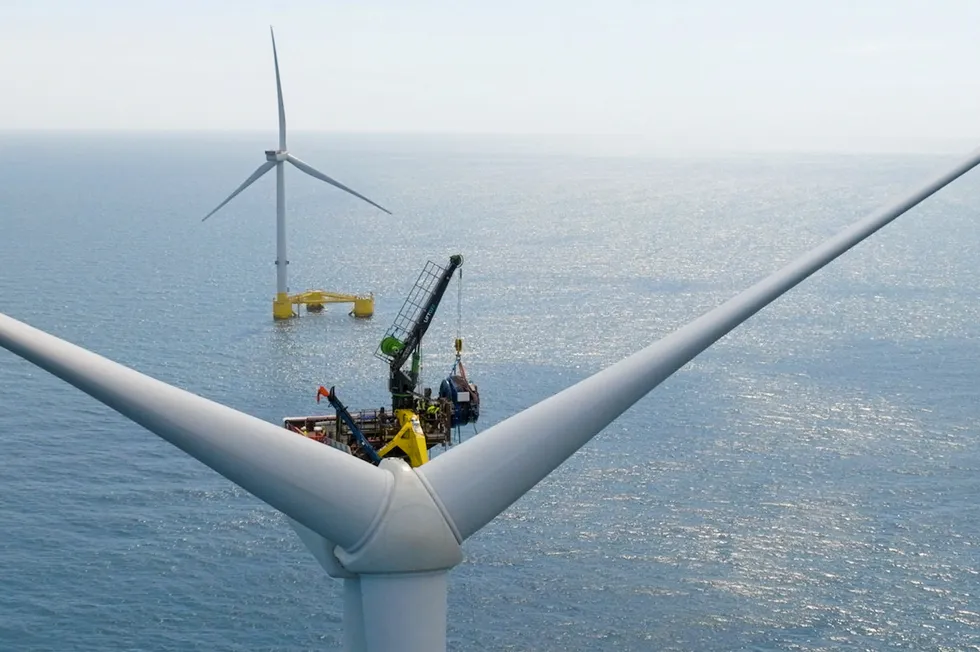From hurricanes and design flaws to long-term wear and tear, there are many reasons why operators have to do major component replacement projects at their offshore wind turbines. Such works test the finances, organisational skills and decision-making of offshore wind owners.
The challenge is growing. In our recent report on offshore wind O&M we saw there are now 8GW of offshore wind farms more than ten years old out of the 75GW in operation globally, and the offshore wind fleet worldwide is set to grow fivefold to 359GW by 2028.
Project owners also face challenges as new offshore wind turbines come to market. The bigger the turbines become, the greater the financial stakes for the owner is something goes wrong at one of them. This is in addition to the fact new models can be rushed to the market without rigorous testing, which leaves owners at risk when components fail.
However, approaches to replacing major components are evolving. There is a wealth of industry experience replacing components at fixed-bottom projects, and that is helping the owners of floating wind farms too. For example, Principle Power last month replaced a turbine generator at the 50MW Kincardine wind farm in UK waters, which is the first time a major component has been replaced ‘in situ’ at a floating wind farm.
When a component failure happens, it sets in motion a complex and costly process. For example, when one gearbox fails it forces an owner to find out why it failed, how to fix it, how much it will cost to put right, and how much money will be lost in the meantime.
In addition, the owner needs to work out if the problem is a one-off or whether they will see gearboxes failures across their project or their wider portfolio; and whether they will be able to execute their plans when facing supply chain disruptions, shortfalls of skilled offshore technicians, lack of available vessels, and difficult weather conditions. It can take over 100 specialist workers for a programme of major component replacements.
There are also contractual considerations. A component failure could spark discussions with the original equipment manufacturer about compensation, depending on whether the machine is in its warranty period or not. This is an administrative headache instead of a practical one, but it is still a knock-on effect following that original failure.
The upshot is that owners and operators need to act quickly to resolve the problems at their turbines and mitigate the financial damage. This is an area where software driven by artificial intelligence can help owners to make the right decisions at their projects.
Finding the most cost-effective strategy for major component replacement
Owners know that downtime, whether planned or unplanned, means lost revenue; and they stand to make or lose more money per turbine with machines of 15MW each than in the ‘good old days’ where top headline capacities were between 3MW and 5MW. The result is that companies need to work efficiently to understand and fix their problems.
In some situations, they may decide a major component replacement is too pricey, due to the capital expenditure on the new component itself as well as labour and other costs. For example, even if they lose between €3,000 and €5,000 per day from a damaged turbine, it would not make sense to deploy an expensive jack-up vessel to get it back online. In that case it would be better to deal with a handful of turbines at once.
This means owners need systems that help them understand the financial impacts of their decisions so they can maximise their long-term financial returns.
This is where artificial-intelligence-based software systems can help. Owners are able to access in-depth insights into how their projects and turbines have been performing, and the potential financial impacts of replacements. Smart software also helps them to coordinate different contractors; to run simulations that help them to develop optimal strategies; and to establish where this work fits into their broader O&M strategies.
This draws on similar skills used in the construction and O&M phases of projects. The process of replacing a major component is essentially a construction project, because owners are subject to the same challenges of supply chain disruption, shortages of essential vessels or workers, hostile weather conditions, and other accidents.
Yet the difference for owners is major component replacements tend to more reactive, because they kick into action after a part fails, than proactive. One failure can prompt an owner to investigate its other machines, but the initial failure tends to come with little to no warning. This means there areadditional pressures to understand what is going on and act quickly. This is an important area where the right AI-driven solutions can help.
We also see major component replacements is an emerging expertise in the offshore wind sector, and can even sit in a standalone business unit separate from the owner’s core construction of O&M teams. Therefore, software systems can help to coordinate owners’ internal teams and to share best practice.
For example, owners use Shoreline’s systems to plan major component replacement projects that take into account weather and the availability of key resources, and synchronize with existing O&M programmes. This helps them to model the impacts of major component replacements on both up-front costs and on availability; share the plan with partners; and then coordinate in areas including work orders, marine movements, and capacity planning. This provides both an overarching strategy and day-to-day scheduling.
Click here to find out more about our approach in this webinar.
Having all this information related to a project in one platform saves multiple hours per day because employees do not need to go and find information in different places. In the immediate aftermath of a major component failure, this speed is invaluable.


